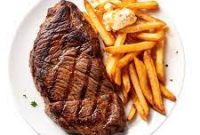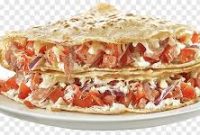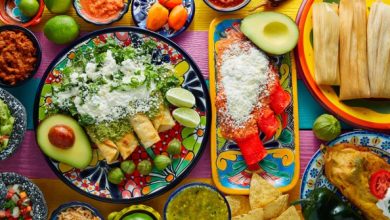Introduction
The United States’ culinary scene is a lively tapestry made from a wide range of ethnicities, histories, and customs. The nation’s diverse background, regional variations, and unwavering quest of innovation are all reflected in the cuisine of the United States. The many facets of American food are examined in this article, which also looks at its historical foundations, regional specialties, cultural influences, and the ways that globalization has influenced and changed the country’s culinary identity.
Historical Roots and Influences
Like the nation, American food is a mash-up of various influences. The varied and ever-evolving tapestry of American meals has been influenced by culinary traditions from Latin America, Africa, Asia, Europe, and Native America. A complex gastronomic interchange began when European settlers arrived in the 17th century, and Native American staples like maize, beans, and squash became part of the European settlers’ diet.
Southern cuisine evolved as a result of the unique flavors and cooking methods provided by the African diaspora. African culinary contributions include the use of spices, slow-cooking techniques, and an emphasis on rice and grains in recipes like jambalaya and gumbo. What we currently know as classic American cuisine was founded by the combination of these disparate ingredients.
Regional Specialties
The geographical diversity found in the many culinary traditions across the nation is one of the things that makes American cuisine so distinctive. From the barbecue of the South to the lobster rolls of New England, every area has its own signature dishes that are firmly based on regional ingredients and cultural influences.
Barbecue is more than simply a cooking technique in the South; it’s a way of life. Barbecue traditions differ from area to region, reflecting subtleties in history and culture. Some examples of these traditions are the sweet and smokey ribs of Memphis, the acidic pulled pork of North Carolina, and the beef brisket of Texas.
The South’s gastronomic treasure is New Orleans, with its influences from Cajun and Creole cuisine. Dishes like gumbo, étouffée, and jambalaya highlight the region’s distinctive fusion of French, Spanish, African, and Native American tastes. The city’s renowned po’boys and beignets are other examples of its rich culinary legacy.


As one moves west, Texas’s culinary culture is dominated by Tex-Mex, which combines Mexican flavors with products from the United States. Tacos, enchiladas, and chili con carne are common foods that symbolize the blending of cultures that characterize Tex-Mex cooking.
The Midwest’s culinary character is typified by substantial, comforting foods like Cincinnati chili, Chicago deep-dish pizza, and hot-dish casserole. Meanwhile, the seafood-focused cuisine of the Pacific Northwest, which includes salmon, Dungeness crab, and oysters, reflects the region’s emphasis on using fresh, locally produced foods.
The East Coast offers a wide variety of culinary customs, ranging from Philadelphia’s famous cheesesteaks to New England’s abundance of seafood options. The world-class metropolises of New York and Boston have emerged as culinary hotspots, fusing international flavors with regional ingredients.
Globalization and Culinary Fusion
The influence of globalization on American meals in the twenty-first century cannot be emphasized. Culinary barriers have melted as communication and transportation have grown more accessible, ushering in an era of fusion and innovation. American chefs have developed a culinary scene that transcends conventional classification by taking inspiration from cuisines throughout the world.
The popularity of food trucks and pop-up eateries has made it possible to creatively combine a variety of cuisines. Sushi burritos, Vietnamese banh mi sandwiches, and Korean tacos are a few instances of the cross-cultural fusion that defines modern American street cuisine.
Across the country, the farm-to-table movement has grown in popularity, emphasizing seasonal, locally produced products. This movement embraces the variety of international tastes while going back to more conventional, environmentally friendly methods.
Fast Food Nation
The diversity of American cuisine has been enriched by regional specialties and culinary fusion, but it would be negligent to overlook the ubiquitous impact of fast food on the country’s culinary scene. American fast food has been synonymous with quick, easy, and frequently decadent dining because to the growth of fast-food companies like McDonald’s, Burger King, and Taco Bell.
Fast food has been ingrained in American culture and has a significant influence on eating patterns that goes beyond mere convenience. Global cultures have adopted the classic American hamburger, fries, and Coke combo as a symbol of the industry’s attraction and criticism.
Conclusion
American cuisine reflects historical influences, ethnic variety, and a never-ending pursuit of culinary innovation. The history of American food is a monument to the country’s capacity for adaptation, blending, and redefining its culinary identity, from the roots of Native American cuisine to the contributions of immigrants and the contemporary period of globalization.


Understanding the subtleties and flavors that each area contributes to the table is essential as we traverse the intricate and dynamic world of American cuisine. American cuisines provide a kaleidoscope of sensations and experiences that continue to alter the country’s culinary landscape, whether one is indulging in the robust spices of New Orleans’ Creole cuisine, the smokey flavors of Texas barbecue, or the creative fusion concoctions of today’s chefs. American cuisine not only represents where we have been in this cross-cultural culinary voyage, but it also points the way toward a future where innovation, variety, and sustainability will continue to be at the forefront of eating experiences.




